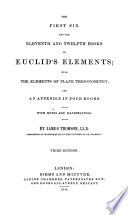 | Euclid, James Thomson - Geometry - 1845 - 382 pages
...part of this proposition, DE is parallel to DC. PROP. III. THEOR. — Tne straight line which bisects an angle of a triangle, divides the opposite side into segments which have the same ratio to one another as the adjacent sides of the triangle have : and (2) if the segments... | |
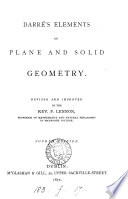 | André Darré - 1872 - 226 pages
...of the homologous sides. PROPERTIES OF TRIANGLES FROM PROPORTIONAL LINES. 87. A line bisecting any angle of a triangle divides the opposite side into segments which are related to each other as the contiguous sides. Let AF (Fig. 75) bisect the angle A in the triangle... | |
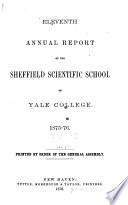 | 1876 - 646 pages
...text-book you have studied and to what extent.] 1. To draw a common tangent to two given circles.' 2. The bisector of an angle of a triangle divides the...opposite side into segments which are proportional to the adjacent sides. 3. The area of a parallelogram is equal to the product of its base and altitude. 4.... | |
 | Education - 1928 - 684 pages
...similar polygons. 3. Test for similarity of polygons. 4. The sum of the exterior angles of a polygon. 5. The bisector of an angle of a triangle divides the opposite side into segments proportional to the adjacent sides. 6. The bisector of an exterior angle of a triangle divides the... | |
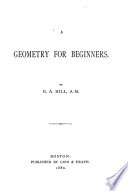 | George Anthony Hill - Geometry - 1880 - 348 pages
...let fall from the vertex of the right angle, («.) the length of this perpendicular. 10. Prove that the bisector of an angle of a triangle divides the opposite side into parts that have the same ratio as the adjacent sides. Hints. — If ABC is the triangle, BD the bisector,... | |
 | Henry Angel - Geometry, Plane - 1880 - 372 pages
...angles, and their homologous sides are proportional (Euclid vi., Definition 1). 6. A line bisecting any angle of a triangle divides the opposite side into segments, which' are in the same ratio as the remaining sides of the figure (Euclid vi. 3). 7. All the internal angles of... | |
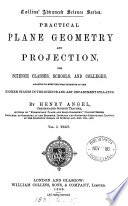 | Henry Angel - 1880 - 360 pages
...angles, and their homologous sides are proportional (Euclid vL, Definition 1). 6. A line bisecting any angle of a triangle divides the opposite side into segments, which are in the same ratio as the remaining sides of the figure (Euclid vL 3). 7. All the internal angles of... | |
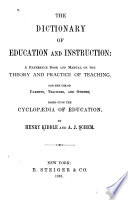 | Henry Kiddle, Alexander Jacob Schem - Education - 1881 - 378 pages
...of the product of several quantities equals the product of their like roots"; " The bisector of any angle of a triangle divides the opposite side into segments which are proportional to the adjacent sides"; etc., are scarcely embraced in Comte's definition without an unjustifiable extension... | |
 | George Albert Wentworth - Trigonometry - 1882 - 234 pages
...of § 36 become when one of the angles is a right angle ? 2. Prove by means of the Law of Sines that the bisector of an angle of a triangle divides the opposite side into parts pro> portional to the adjacent sides. 3. What does Formula [26] become when A = 90° ? when .4... | |
 | Education - 1902 - 730 pages
...right bisector of the join of the given points. The proof is clear by citing the familiar theorem that the bisector of an angle of a triangle divides the opposite side in the ratio of the including sides. PHYSICS. Answer any eight. 1. Explain the "parallelogram of forces."... | |
| |